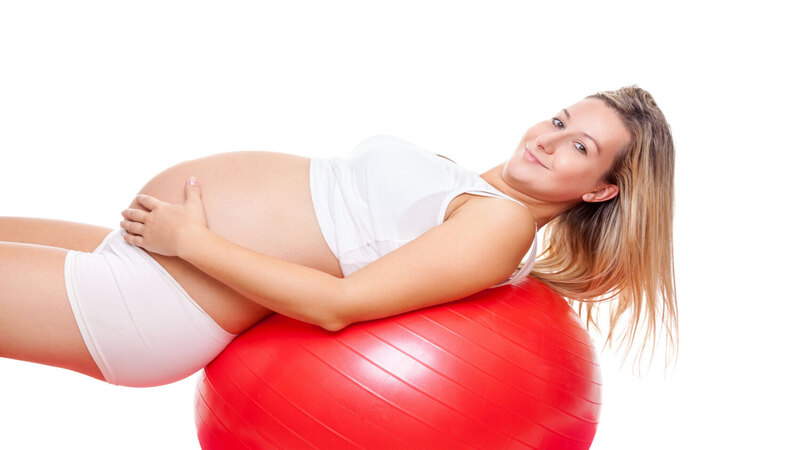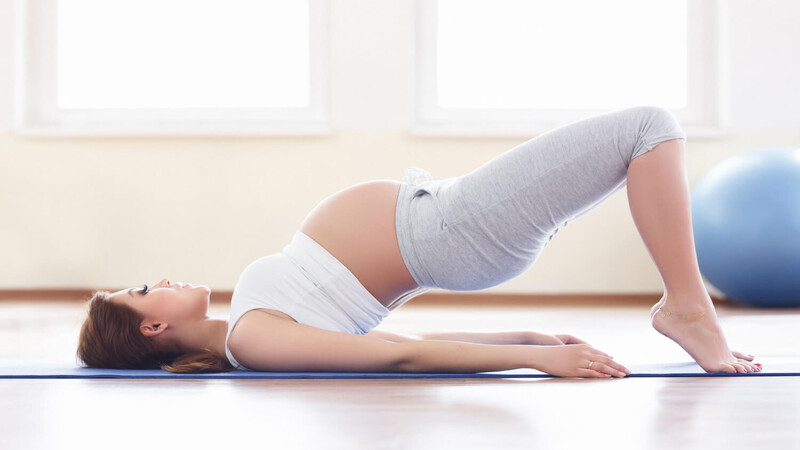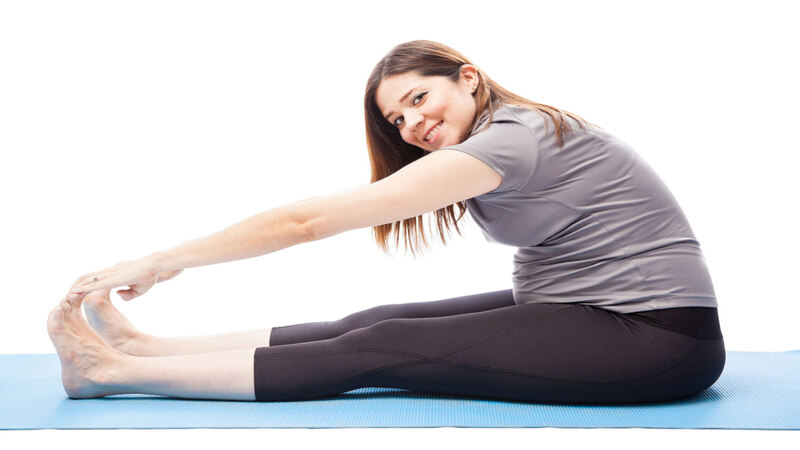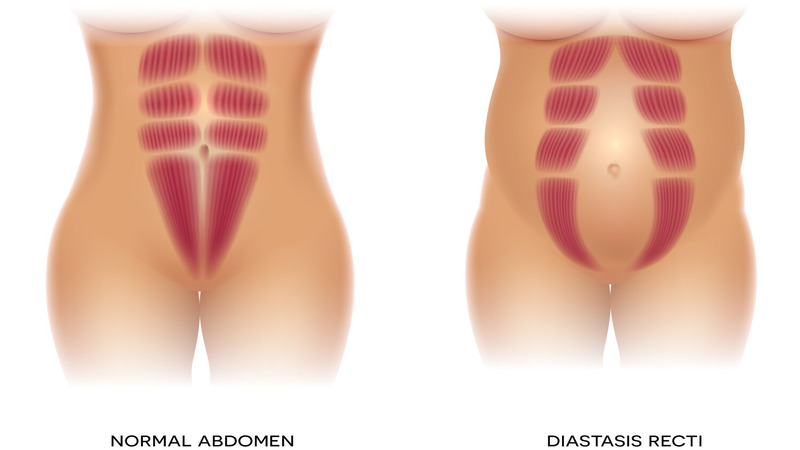
Ensuring good health becomes a priority during pregnancy. Indulging in safe abdominal exercises during pregnancy turns out to be helpful when it comes to coping with pregnancy symptoms such as back pain, strengthening the core, and easing labor. Abdominal workout helps improve your body functionality and ensure pain-free movement while pregnant. Training your abs develops strength, which can facilitate easy pushing during delivery, prevent injury-induced diastasis recti (separation of abdominal muscles), and manage pain.
In this article, we’ll discuss the top 5 safe abdominal exercises during pregnancy that will enhance your workout routine. But before upgrading your exercise schedule, consider consulting your doctor first to check your eligibility.
Are Ab Exercises Safe During Early Pregnancy?
Typically, ab exercises are safe during pregnancy. However, consider that each pregnancy is different, and some exercises may not be recommended for some women. In the early weeks of pregnancy, ab exercises can be easy to perform. As the pregnancy progresses, your baby bump can make it difficult. To be on the safer side, it’s better to consult your doctor.
What Happens To Your Abs During Pregnancy?
Your body experiences changes during pregnancy. As your baby bump grows, your abdominal muscles get stretched. When these muscles are pulled, linea alba (an abdominal connective tissue band) gets thin and weak. Linea alba stabilizes the core and keeps the “six-pack” muscles intact. However, when it loses, it splits up and pushes your organs to the abdomen wall (1). This may cause symptoms like abdominal pain, bloating, etc. It’s better to avoid overexercising as far as treatment is considered.
Benefits of Abdominal Exercises During Pregnancy
Core strengthening exercises can be safely performed to keep up with the demands of pregnancy. These exercises target the core, which includes the back, abdominal, and trunk muscles. Strengthening abdominal muscles can improve the overall core’s functioning and can help in many ways, such as;
Core strengthening exercises can be safely performed to keep up with the demands of pregnancy. These exercises target the core, which includes the back, abdominal, and trunk muscles. Strengthening abdominal muscles can improve the overall core’s functioning and can help in many ways, such as;
- Stabilizing your spine and pelvic region to maintain balance.
- Managing pressure on joints to relieve stress and pain.
- Strengthening your pelvic organs to maintain better bladder and bowel control.
- Toning your muscles for proper posture, pain management, and reducing the risk of diastasis recti. (2)
- Improving the chances of a normal delivery. (3)
Top 5 Abdominal Exercises During Pregnancy
The basis for a good pregnancy is having a solid core. Considerably, it withstands lower back arching and the subsequent pain in the course of labor.
1. Side Plank

Planks strengthen your back and Abs and are viable to lessen spine pressure (4). They improve balance and coordination while reducing the risk of injuries (5). Here’s how to do planks.
- Lie down comfortably on the floor
- Begin with your left elbow placed beneath your shoulder.
- Hips to face forward in a stacked position
- Legs to be stretched long
- A modification is to bend your knees
- Raise or lift your right hip to enhance or engage your core sides
- For balance, use the side of your bottom foot
- A change in position can be done by balancing on your bottom knee while stretching your top legs, and also resting your foot on the floor for more balance
- The position of the plank exercise is for 20 seconds, and your leg is to be lowered down gently.
- Next, repeat this exercise on the opposite side of your body.
- Alternate sides- 3 each side to a total of 6 repeats
2. Standing Crunch
It is safe to do crunches during your first trimester. After the trimester, avoid crunches as they apply pressure on the veins carrying blood to your heart.
- Start the crunches by standing with your feet apart and toes slightly turned outward
- Knees to be bent and positioned in a deep squat
- Lift your chest and engage your core
- Raise yourself to a standing position by pressing your heels
- Extend your arms as you rotate through your knees, hips, and torso
- Next squat again, and raise yourself by rotating on the opposite side
- Standing crunches as 3 sets and 30 seconds each, while alternating the rotation
3. Standing Toe Touches
Standing toe touches enhance the flexibility of your hips and spine (6). During pregnancy, you tend to spend a long time sitting and standing where your muscles become tight and you find it tough to reach for your toes.
- Stand with your feet apart, say a hip-width apart
- Hips to be slightly arched
- Slide your arms towards your feet and slowly down your thighs.
- Try to straighten your back and lower yourself gently
- Hold these positions for 30 seconds and slowly raise yourself to the upright position
- Repeat this thrice
4. Kegels

Kegel exercises assist you with labor because they strengthen pelvic muscles (7). Moreover, Kegels can help with labor delivery and improve bladder and bowel control (8), (9). Here’s how to do them. Inhale and exhale comfortably and be relaxed completely.
- Only your pelvic muscles should be concentrated on.
- Tighten your muscles and hold for 3 seconds.
- Relax or rest for 3 seconds.
- 2 sets of Kegels around 10 to 15 on alternate days.
While performing the standing toe touches, if you feel even the mildest discomfort, ease off, and stop the exercise.
[Read: Top 5 Benefits of Kegels during Pregnancy]
5. Sitting Knee Lift
Your hip mobility will increase thanks to this workout, making it easier for you to elevate your leg when standing.
- Seat yourself comfortably toward the edge of your chair
- Feet must be planted flat on the floor exactly under your knees.
- Palms are to be placed facing downward under your hips.
- Contract your abdomen slowly by bending your left knee in a way that tilts your pelvis and activates the pelvic floor.
- Slowly bring your left knee towards your chest as you exhale.
- Inhale and lower your left foot to the floor back to your starting position.
- Repeat this with your right leg.
- Do 2-3 sets of 8 to 12 repeats
6. Squats
Other than working on your lower body muscles, squats are an effective exercise to strengthen your core. They target deep stabilizing muscles to improve balance and posture while supporting your spine (10). Here’s how to do it.
- Stand and keep your feet shoulder-width apart.
- Straighten your arms in front of your body to ensure balance.
- Lower your body as far as you can, keeping your back straight and distributing your weight on the heels
- and knees in line with your toes.
- Return to your starting position while squeezing your hip muscles (glutes).
- Do 2 to 3 sets of 10 repetitions.
7. Pilates
Pilates exercises target deeper and smaller stabilization muscles to strengthen your core. These exercises include low-impact bodyweight exercises and mat workouts to improve strength, flexibility, and mobility. They relieve low back pain and reduce the risk of falling. Pilates can be an effective exercise during the initial days of pregnancy.
- Lie on your back while supporting your head and shoulders on a pillow.
- Bent your knees and breathe slowly.
- Press your back down using your abdominal muscles.
- While doing so, this will tilt your pelvis and your tailbone will rise.
- Gently, hold the position for 5 to 10 seconds.
- Do 5 to 10 repetitions.
8. Diaphragmatic Breathing
Diaphragmatic breathing or transverse abdominal breathing, works on your deepest core muscles that maintain the posture and prevent back pain. Plus, it also targets the pelvic floor to ease labor.
- Sit comfortably with your knees folded.
- Put one hand on the upper chest and the other on the rib cage.
- Inhale slowly with your nose.
- Feel that your stomach moves out.
- Tighten your stomach while exhaling so that your stomach moves in.
- During the process, keep your hand on the chest stable.
- Do 3 sets with 5 to 10 repetitions each.
9. Glute Bridge
Glute bridge exercise helps alleviate pelvic and lower back pain while strengthening abdominal muscles.
- Lie on your back with your feet at hip-width apart while bending your knees and flattening your heels.
- Take a deep breath and tighten your core.
- Lift your butt by pressing through your heels.
- Lift slowly and to the height you feel comfortable. Avoid over lifting.
- Return to the starting position, lowering your butt while releasing your core.
10. Bird Dog
This exercise stabilizes your spine, pelvic floor, and core to improve balance and coordination.
- Place your hands and knees on the floor, like maintaining a quadruped or crawling position.
- Extend your left hand and right leg to the complete length.
- Hold the position for 10 to 15 seconds and return to the starting position.
- Repeat the same on the other side.
- Do 3 sets of 5 repetitions.
Safety Measures While Performing Abdominal Exercises When Pregnant

Keeping your safety in mind is significant to minimize the risk of injuries or complications. You can build an exercise routine and adopt the tips for a healthy and safe pregnancy.
- Be sure to drink plenty of water and keep yourself essentially hydrated
- Exercises should be started gradually into your daily routine
- Awareness of your body is important. The first signs of any discomfort can be read by you because your body will send warning signals and you need to slow down on your exercise.
- Comfortable clothing makes exercise more enjoyable. Wear loose clothing, belly support helps a lot and so does a sports bra
- Avoid overdoing exercises during the hot weather
- Never stand still or lie down flat
Make sure you are comfortable while exercising. Even mild exercises support a good pregnancy too. If you have a companion to walk you through your abdominal exercises, that is a safe way to work out.
[Read: How Much Water Should I Drink During Pregnancy?]
Ab Exercises To Avoid During Pregnancy
While ab pregnancy workouts may differ from individual to individual, it’s crucial to avoid some exercises that stress your body. Many healthcare providers recommend avoiding exercises that involve crunching or twisting the torso. This can split abs while increasing the risk of hernias. This may include exercises like sit-ups, Russian twists, crunches, etc. Also, pregnant women should avoid lying on their back for a long time as this can restrict blood flow to the uterus.
What is Abdominal Separation?

To accommodate your body during your pregnancy, the abdominal muscles separate to an extent. This causes the fibrous tissue that holds the abdomen together, to separate leading to abdominal separation or Diastasis Recti. The separation causes a stretch in the abdominal muscle. As a result, there is a weakness in the middle section and creates a visible gap in the muscles of the abdomen (11).
A bulge is created and stays so even after childbirth. Abdominal separation is common and more predominant during the first few weeks after delivery. Strong abs will sometimes resist abdominal separation and the gap will close on its own accord. Before it heals you should not start exercises like crunches or sit-ups.
How to Check For Abdominal Separation Before Exercising?
Before initiating your abdominal exercises, please check with your physician regarding your abdominal separation or Diastasis Recti.
- Lie on your side first and then roll onto your back
- Keep your feet firmly on the floor and bend your knees at an angle of 90 degrees
- Let your stomach relax
- Gently place your fingers on your belly button
- Raise your head an inch or two
- Press your fingers and feel along your abdomen from side to side and check
The above steps are to be repeated two inches above and below your belly button.
You will notice a gap and the width will be approximately two fingers width or more which denotes an abdominal separation.
What Happens To Your Abs After Pregnancy?
Diastasis recti is a common post-pregnancy condition characterized by separation of abdominal muscles. As the bump grows, it separates and pushes the muscles, making them long and weak. This reduces the functionality and integrity of the abdominal wall, leading to restricted mobility, instability, and abdominal and pelvic pain (12). Your healthcare provider can create a customized workout plan for you for better results.
Adding safe abdominal exercises during pregnancy to your routine can be a game-changer. They help you ensure better health and gain abdominal strength to support your baby bump as the pregnancy progresses while managing common pregnancy symptoms such as back pain. Moreover, it’s always better to consult your doctor before trying these exercises to achieve desired outcomes and reach your health goals.
FAQ’s
1. When Should I Stop Abdominal Exercises During Pregnancy?
Pain in the chest or shortness of breath, nausea, and dizziness are the red signals to stop your abdominal exercises. Sometimes there is sudden swelling in the calves, ankles, and face. You may notice some vaginal bleeding and a reduction in the movement of the baby. Look out for these crucial signs and seek medical attention for safety measures.
2. Can I Do Abdominal Exercises While Pregnant?
Physical activities focussing on strengthening the core can be beneficial during pregnancy. However, pregnant women should avoid exercises that put extra pressure on the abdomen and spine, such as crunches while lying on the back. Also, it’s better to switch positions, such as kneeling, standing and sitting, to avoid stress on the abdomen.
3. How Can I Tone My Lower Stomach During Pregnancy?
Abdominal strengthening exercises can be helpful when it comes to toning lower stomach muscles during pregnancy. They improve flexibility and circulation and ease back pain while ensuring joint mobility. Also, they help gain core stability for better results.
4. What Exercises Keep Your Stomach Small During Pregnancy?
Various exercises tone your stomach muscles during pregnancy, such as standing pelvic tilts and diaphragmatic breathing. To perform standing pelvic tilts, stand against the walls with your shoulders straight, keeping your feet width apart. Gradually bend your knees and slide against the wall. Hold the position for 5 seconds and get back to the normal position. Try doing this 10 to 15 times daily. To do diaphragmatic breathing, lie down and place one hand on the stomach and the other on the upper chest. Breathe through the nose and exhale through the mouth while pulling the belly in. Try doing 10-15 repetitions daily.
5. Can We Do Belly Fat Exercise During Pregnancy?
Managing weight and exercising during pregnancy can be effective, especially for obese women. However, it’s good to consult a doctor before trying them. Moreover, they might not be suitable for high-risk pregnancies and those with a history of miscarriage.
6. How Often Can I Do Abdominal Exercises During Pregnancy?
You can start these exercises in your first trimester and can continue in your second trimester as per your doctor’s recommendation. Typically, two to three times a week could be a great headstart.
7. Are There Any Risks Associated With Abdominal Exercises During Pregnancy?
Abdominal exercises are safe; however, overdoing them may impose some risks. These include reducing oxygen flow to the uterus, fluctuating mother’s blood pressure, temperature changes, injuries, etc.
8. Can Abdominal Exercises Help Prevent Diastasis Recti During Pregnancy?
Abdominal exercises can help manage diastasis recti during and after pregnancy. These help decrease the separation and build strength while restoring integrity.
9. Can Abdominal Exercises Help With Postpartum Recovery?
Targeted core or abdominal exercises significantly improve abdominal recovery and strength after pregnancy. They tone muscles and firm your body, building tension and normalizing functionality.
[Read Also: Prenatal Pilates Exercises Safe During All Trimesters]
References
- Radhakrishnan M, Ramamurthy K. Efficacy and Challenges in the Treatment of Diastasis Recti Abdominis-A Scoping Review on the Current Trends and Future Perspectives. Diagnostics (Basel). 2022 Aug 24 – https://www.ncbi.nlm.nih.gov/pmc/articles/PMC9498119/#
- Thabet AA, Alshehri MA. Efficacy of deep core stability exercise program in postpartum women with diastasis recti abdominis: a randomised controlled trial. J Musculoskelet Neuronal Interact. 2019 Mar – https://www.ncbi.nlm.nih.gov/pmc/articles/PMC6454249/
- Rise E, Bø K, Nystad W. Is there any association between abdominal strength training before and during pregnancy and delivery outcome? The Norwegian Mother and Child Cohort Study. Braz J Phys Ther. 2019 Mar-Apr;23 – https://www.ncbi.nlm.nih.gov/pmc/articles/PMC6428922/#
- Park, Du-Jin & Park, Se-Yeon. (2019). Which trunk exercise most effectively activates abdominal muscles? A comparative study of plank and isometric bilateral leg raise exercises. Journal of Back and Musculoskeletal Rehabilitation – https://www.researchgate.net/publication/344096152_
- Walton, Lori Maria & Costa, Adislen & LaVanture, Donna & McIlrath, Sarah & Stebbins, Brittney. (2016). The effects of a 6 week dynamic core stability plank exercise program compared to a traditional supine core stability strengthening program on diastasis recti abdominis closure, pain, oswestry disability index (ODI) and pelvic floor disability index scores (PFDI). Physical Therapy and Rehabilitation – https://www.researchgate.net/publication/301270728_
- Park, Sieun & Lim, Wootaek. (2020). Effects of Proprioceptive Neuromuscular Facilitation Stretching at Low-intensities with Standing Toe Touch on Developing and Maintaining Hamstring Flexibility. Journal of Bodywork and Movement Therapies – https://www.researchgate.net/publication/344096152_
- Huang YC, Chang KV. Kegel Exercises. [Updated 2023 May 1]. In: StatPearls [Internet]. Treasure Island (FL): StatPearls Publishing; 2024 Jan – https://www.ncbi.nlm.nih.gov/books/NBK555898/
- Salvesen KA, Mørkved S. Randomised controlled trial of pelvic floor muscle training during pregnancy. BMJ. 2004 Aug – https://www.ncbi.nlm.nih.gov/pmc/articles/PMC509343/#
- Pires TF, Pires PM, Costa R, Viana R. Effects of pelvic floor muscle training in pregnant women. Porto Biomed J. 2020 Sep – https://www.ncbi.nlm.nih.gov/pmc/articles/PMC7657576/
- Nesser, Thomas & Fleming, Neil. (2016). Activation of Selected Core Muscles during Squatting. Journal of Athletic Enhancement. – https://www.researchgate.net/publication/301235846_
- Hall H, Sanjaghsaz H. Diastasis Recti Rehabilitation. [Updated 2023 Aug 8] – https://www.ncbi.nlm.nih.gov/books/NBK573063/#
- Fukano M, Tsukahara Y, Takei S, Nose-Ogura S, Fujii T, Torii S. Recovery of Abdominal Muscle Thickness and Contractile Function in Women after Childbirth. Int J Environ Res Public Health. 2021 Feb 22 – https://www.ncbi.nlm.nih.gov/pmc/articles/PMC7926552/#

